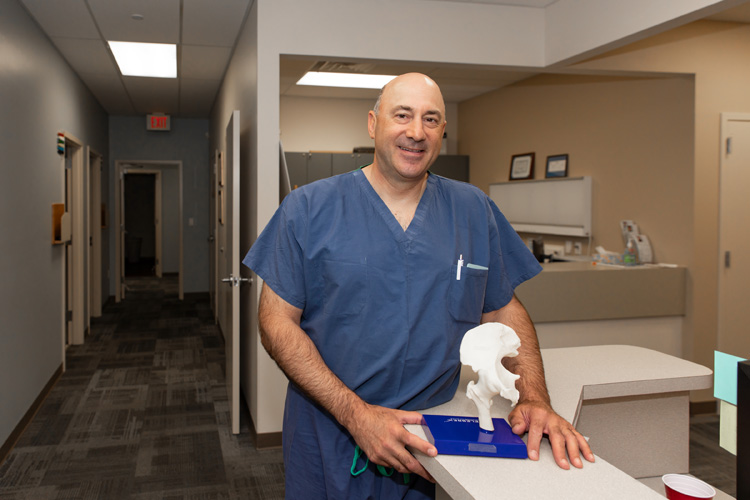
Hip replacements are big business. Really big business. And getting bigger all the time.
How big? The National Center for Health Statistics reports that more than 3 million Americans have already had a hip replaced, and that’s just the tip of this surgical iceberg.
Harvard’s medical school says some 330,000 more Americans will join the list this year and Orthopedic Design and Technology projects that by 2030 that figure will nearly double to 635,000 annually. By 2040, it estimates some 1.23 million hip replacements will be performed each year.
With numbers like those coming down the pike, it is good to have Dr. Richard Steinfeld of the Orthopaedic Center of Vero Beach in town. He has nearly 20 years of experience doing hip replacements here and, to his way of thinking, a better technique than many other doctors are using.
It’s called ‘the direct anterior hip replacement procedure.’
“I think there’s a lot more awareness of the direct anterior by patients and surgeons alike,” Steinfeld explains. “More and more surgeons are being trained on the technique. More and more patients are inquiring about it. More and more cases are being done. I’m now doing about 90 percent of hip replacements through the direct anterior approach.”
The University of Washington’s Orthopedic and Sports Medicine Center seems to embrace Steinfeld’s point of view, reporting that “traditional hip replacement surgery involves making an incision on the side of the hip (the lateral approach) or the back of the hip (the posterior approach). Both techniques involve detachment of muscles and tendons from the hip in order to replace the joint and the detachment of these muscles may result in increased pain after surgery and often prolongs the time to fully recover by months or even years. Failure of these muscles to heal after surgery may increase the risk of hip dislocation which is the leading cause of hip replacement failure.”
The anterior approach, on the other hand, “allows us to place the incision in the front in the upper part of the thigh bone,” Steinfeld says. “It allows us to go directly between muscle groups. There’s no splitting of muscles. There’s no removing of muscles from their attachment site. That allows the patient to use those muscles right away. So with that, we have people up and walking the same day after surgery.”
AARP also endorses Steinfeld’s direct anterior approach, calling it “a big shift from traditional hip surgery,” which it says “requires some people to be in the hospital for days and leaves them lingering in pain.”
At the same time AARP notes that, as with most medical procedures, anterior hip surgery is not for everyone.
The ideal patients for this, says AARP, are people in their late 40s, 50s and early 60s who are active and willing to commit to an at-home recovery plan and have family members or friends there for support, adding that those with cardiac disease, chronic liver disease, uncontrolled diabetes, obesity or other medical risk factors might not be suited for this particular surgical approach.
There’s also another kind of risk factor, in Steinfeld’s view, and that’s the surgeon’s level of experience.
The direct anterior procedure, he states flatly, “is tough to learn. There’s definitely a steep learning curve. So, you have to take your time and get cases under your belt. You have to have scrubbed-in and traveled, at your own expense, to multiple surgeons to learn. That really needs to be done. It’s not something you want to take on lightly.”
Steinfeld certainly doesn’t and that attitude seems to be working for him.
“We’re probably doing two or three [direct anterior hip replacements] a week now and we’ve done well over a hundred here over the past year,” he says.
Dr. Richard Steinfeld is with the Orthopaedic Center of Vero Beach at 1285 36th Street, Suite 100 and the Indian River Medical Center. His office phone number is 772-778-2009.



